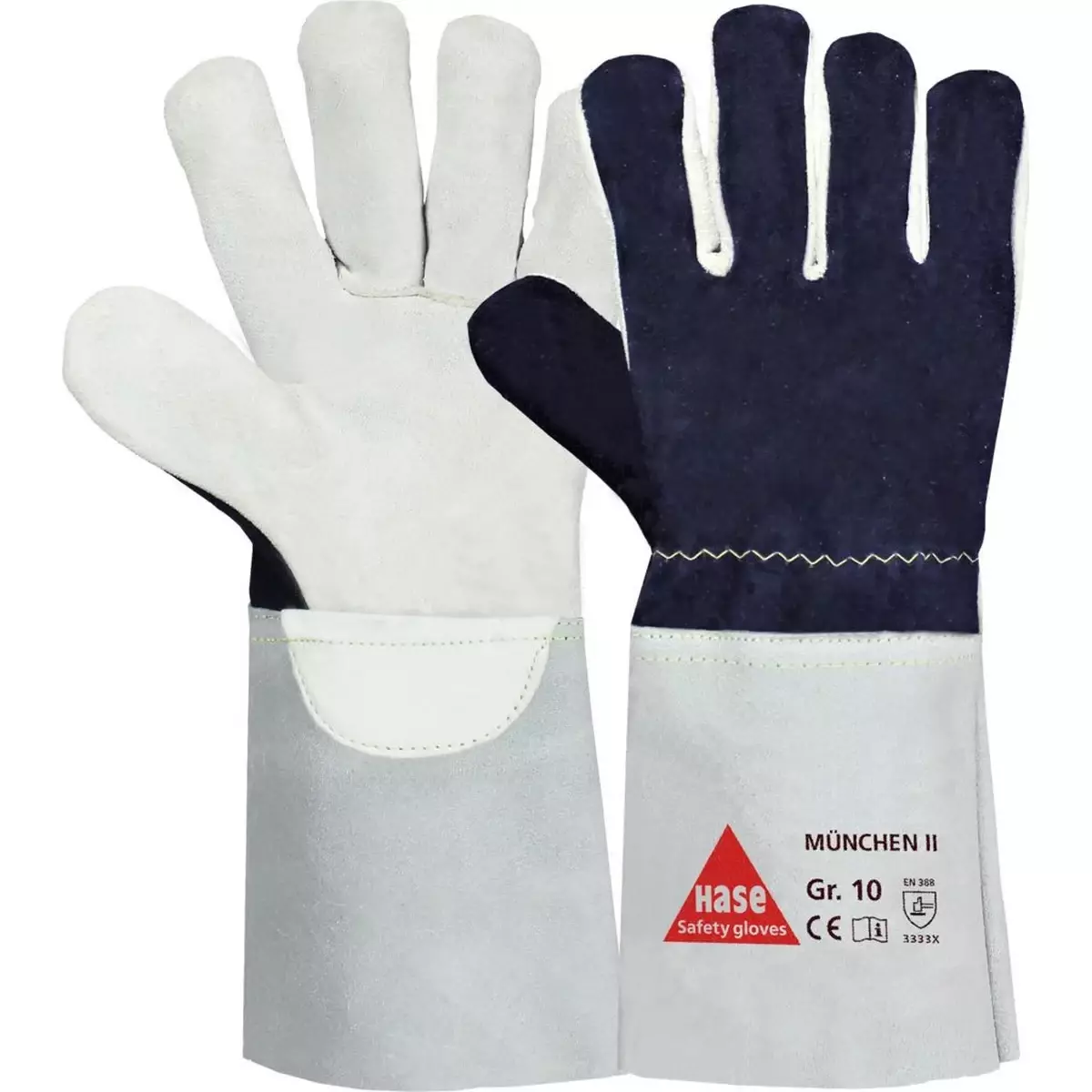
Product description
Cut-resistant work glove made of cow split leather with high wearing comfort and reversed cow grain leather palm, Kevlar® seams/full hand lining. EN 388
About Leather Cut Resistant Glove
Leather Cut Resistant Gloves provide superior hand protection against cuts, slashes, and heat in demanding work environments. Featuring durable construction and extended cuffs for wrist protection, these gloves are ideal for welding, metalwork, and construction tasks where safety is essential.
- Hand Protection
- Cut Resistant
- Heat & Flame Resistance
- Slip Resistant
Standards and labels
Hase Safety Gloves delivery terms
Free delivery for all Hase Safety Gloves products
Hase Safety Gloves
Hase Safety Gloves logo
MÜNCHEN II Cut Protection Gloves, Size 10, 6 pairs
Hase Safety Gloves
MÜNCHEN II Cut Protection Gloves, Size 10, 6 pairs
Hase Safety Gloves logo
4.8 / 5
90,52 €
99,95 €
Price per 6 pairs
15,09 € / pair
Estimated delivery: Fri Dec 19 - Mon Dec 22
Choose size
Free delivery